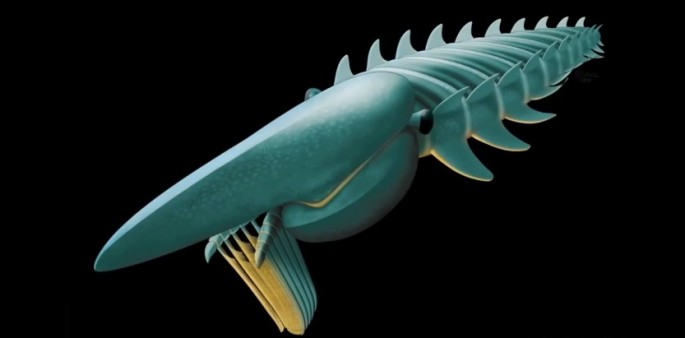A 480-miilion-year-old fossil of a "sea monster" was found by paleontologists that is known to be an anomalocaridid, which is an ancestor of modern arthropods like lobsters and scorpions.
The massive fossil measures about seven feet and reveals a giant creature that had two sets of legs, as researchers previously thought they only had one.The creature also utilizes a filter when it feeds that allows it to consume great amounts of plankton as a meal.
The species is now called Aegirocassis benmoulae, after Mohamed Ben Moula who is the first person to uncover the fossil in southeastern Morocco in 2011.
When the fossil was received at Yale University's lab, lead researcher Peter Van Roy who is also a paleontologist decribed its initial appearance as dirty and dusty. During cleaning the specimen, he realized that it had two sets of flaps on every body segement that suggests the creature had two sets of legs.
Van Roy was shocked when he saw two sets of legs where he went on to check the specimen everyday to examine it again and to make sure that he was definitely not seeing things.
With the help of this fossil, researchers can now place the anomalocaridid under the arthropod family tree which provided the scientists a clear look of the giant as its exact anatomy eluded paleontologists for a long time.
During the 19th century, fossils of the anomalocaridid were already discovered however their appearance was so baffling, with a whale head, bristly appendges and a body covered with flaps, many thought that this fossil belonged to several different animals.
Van Roy described the anomalocaridids as not having any front limbs and arthropods are described as possessing joint legs and this creature apparently did not have any to begin with.
However, the new fossil reveals the two seaparate sets of flaps for each body segment. The upper flap is consistent with the upper limbs of modern arthropods and the lower flaps act as modified legs that are adapted for swimming.
The fossils were so flattened that researchers had a hard time differentiating the two sets of flaps, says Greg Edgecombe who is a researcher from The Natural History Museum in London, not involved in the study.
Van Roy and his team examined older fossils and realized that they also had upper and lower flaps seen in the new fossil, meaning, they have overlooked these features before.This study is published in the journal, Nature.



























